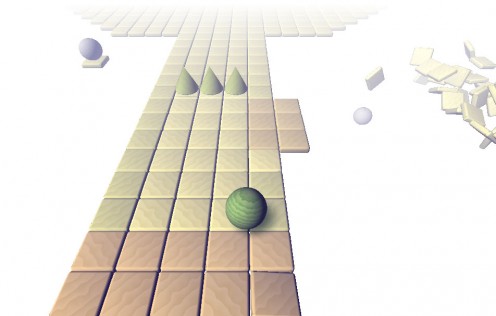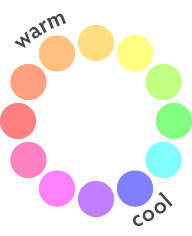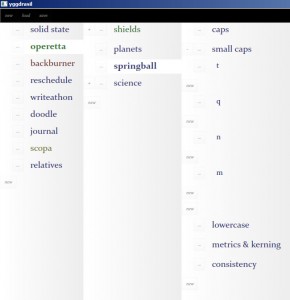I was playing this card game last night called Cards Against Humanity. It’s like Apples to Apples a bit. There’s a deck of question cards and a deck of answer cards. Players have a hand of answer cards, and each turn, one player draws a question card, reads it aloud, and every other player submits an answer card that they think fits the question. The player who played the funniest answer gets a point.
So for example, one of the question cards is
After the earthquake, Sean Penn brought __________ to the people of Haiti.
I tend to find absurd answers the funniest. There’s a Sean Penn answer card — you could say Sean Penn brought Sean Penn to the people of Haiti.
But in many ways, the point of the game is to be as gross or offensive as possible. This is, after all, “a party game for horrible people” according to the game’s box. So you could say Sean Penn brought pretending to care, or friendly fire, or even man meat; those are all answer cards you could play, things Sean Penn could bring to Haiti.
And those are pretty tame answers.
There are answer cards I won’t mention here, and there are many, many answer cards referencing things or acts I’m unfamiliar with, except to say I suspect they’re probably fairly naughty.
So last night was the second time I’d played this game, and I did somewhat better than the first, despite not knowing what many of the cards meant and not exactly being adept at making dirty jokes.
And I realized — it doesn’t matter whether or not I get the dirty jokes being made during the game, or whether or not I get what makes a dirty joke funny, because getting it isn’t strictly necessary for doing well. What’s necessary is a good sense of pattern matching.
* * *
Recently, some people at Google wrote some software to look at random images and try to identify and categorize important features within each images, without being told what was important or what was worth looking for. Evidently, the software decided that cats were important. I find this quote particularly interesting:
We never told it during the training, ‘This is a cat’… It basically invented the concept of a cat.
It’s easy to read an article like this and think about how we would think about this, about recognizing pointy ears and slit-shaped eyes and fur and all those things about a cat that make a cat not look like a person, but this is a pretty low-level thing going on here. The Google software does not know what a cat is. It presumably knows that, in many images, this recurring pattern appears, a pattern we would recognize as a cat, but which the software has no name for.
* * *
I rather like learning new skills starting with nothing but pattern matching, but unlike the Google thing, I want to be given some instruction as to what I’m looking for. Take music, for example. I didn’t start by learning music theory. I’m not sure you can say I listened to a wide variety of works and decided on my own what sounded best. I started by listening, over and over, to works that other people have defined as good. Famous symphonies, Oscar-nominated movie scores.
The trick here is to take it on faith that what people say is good, is in fact good. And of course tastes vary, but I’d argue that you at least have to start by taking these things on faith, if you’re going to learn anything.
Sure, I’ve studied a bit of music theory in the last couple of years, but I still have trouble defining what makes these works good; they are, by definition, good. You could say I don’t know what good composition is any more than that Google software knows what cats are. I just know some patterns, and I’m not even doing that much concept invention the way Google’s thing realized that cats were a thing. What sorts of musical things are out there, that I haven’t even categorized, much less studied?
* * *
This approach only gets you so far. If you want to teach, it will be difficult. If you want to do something that’s novel but still appealing, you’ll have a hard time. And it gets frustrating sometimes, being able to do things like draw or compose or code without really understanding what you’re doing.
But it’s a good place to start, and the nice thing about this approach is, I’ve gotten ‘so far’ on a wide variety of things this way.
Speaking of which, I should probably check out YouTube videos of commonly accepted ‘good’ running form. I’m sure they’re out there.


